Download Agreement to changes to Referenced Station Operating Instructions
Transcript
NOT PROTECTIVELY MARKED Office for Nuclear Regulation An agency of HSE Redgrave Court Merton Road Bootle Merseyside L20 7HS Tel: 0151 951 4000 www.hse.gov.uk/nuclear PROJECT ASSESSMENT REPORT Report Identifier: ONR-WYF-PAR-12-029 Revision: Revision 0 Project: Shutdown Seismic Safety Case Site: Wylfa Title: Agreement to changes to Referenced Station Operating Instructions (RSOI) D1 and D5 including preventing air admission and refuelling until seven days after reactor shutdown Licence Instrument No.: (if applicable) Agreement no 553 Nuclear Site Licence No.: 58A Licence Condition: 22(1) TRIM Ref: 2012/86531 Document Acceptance and Approval for Issue / Publication Role Name Author Accepted by Position Signature Date HM Principal Inspector 1 HM Superintending Inspector Approval for publication: 2 HM Superintending Inspector Revision History Revision 0 1 2 Date Author(s) 13 July 2012 Reviewed By Accepted By n/a Description Of Change st 1 issue Acceptance of the PAR to allow release of LI Approval is for publication on ONR web-site, after redaction where relevant. PROTECTIVE MARKING IF APPLICABLE NOT PROTECTIVELY MARKED Office for Nuclear Regulation An agency of HSE Redgrave Court Merton Road Bootle Merseyside L20 7HS Tel: 0151 951 4000 www.hse.gov.uk/nuclear Circulation (latest issue) Organisation Office for Nuclear Regulation Name Date (Cover page and summary only) Files: 4.4.1.1798 & 4.4.2.9996 Environment Agency Licensee EA Site Inspector Wylfa Site Director PROTECTIVE MARKING IF APPLICABLE 13 July 2012 NOT PROTECTIVELY MARKED Office for Nuclear Regulation An agency of HSE Redgrave Court Merton Road Bootle Merseyside L20 7HS Tel: 0151 951 4000 www.hse.gov.uk/nuclear … Shutdown Seismic Safety Case Agreement to changes to Referenced Station Operating Instructions (RSOI) D1 and D5 including preventing air admission and refuelling until seven days after reactor shutdown Project Assessment Report: ONR-WYF-PAR-12-029 Revision 0 13 July 2012 © Crown copyright. If you wish to reuse this information visit www.hse.gov.uk/copyright.htm for details. You may reuse this information (excluding logos) free of charge in any format or medium, under the terms of the Open Government Licence. To view the licence visit www.nationalarchives.gov.uk/doc/open-government-licence/, write to the Information Policy Team, The National Archives, Kew, London TW9 4DU, or email [email protected]. Some images and illustrations may not be owned by the Crown so cannot be reproduced without permission of the copyright owner. Enquiries should be sent to [email protected]. PROTECTIVE MARKING IF APPLICABLE NOT PROTECTIVELY MARKED Office for Nuclear Regulation Project Assessment Report: ONR-WYF-PAR-12-029 Revision 0 An agency of HSE EXECUTIVE SUMMARY ONR agreement to changes to Referenced Station Operating Instructions (RSOI) D1 and D5 including preventing air admission and refuelling until seven days after reactor shutdown Permission Requested Magnox Ltd, the site licence company (the licensee) that operates and maintains Wylfa Power Station, has requested ONR agreement to changes to RSOIs D1 and D5 including preventing air ingress until seven days after reactor shutdown in accordance with its arrangements made under Licence Condition 22(1) of nuclear site licence 58A. Background Wylfa Power Station consists of two Magnox reactors, with one pre-stressed concrete pressure vessel for each reactor. Reactor 2 shut down permanently in April 2012, whilst Reactor 1 continues to operate. During reactor operation, Reactor 1 contains pressurised carbon dioxide gas. This is circulated through the reactor core, which contains the fuel and the boilers, to transfer heat to steam that drives the generators. Periodically, or as a result of plant issues, the reactor needs to be shutdown for maintenance and in some cases the carbon dioxide gas has to be removed and the reactor filled with air. The carbon dioxide atmosphere in the reactor must be maintained until the reactor has cooled sufficiently that air can be allowed to enter. Magnox Limited has proposed changing RSOI D5 to increase the time at which air ingress is allowed from six to seven days. There is also a limit in RSOI D1 that refuelling in air is not permitted immediately after shutdown and the licensee has also proposed that the limiting time for this should also be increased from six to seven days. Under the licensee’s arrangements it must seek ONR agreement to allow the proposed changes to the RSOIs. Assessment and inspection work carried out by ONR in consideration of this request ONR has assessed the paper of principle for the proposed changes to RSOI D1 and D5. Assessment has been completed by a fault analysis specialist inspector. Matters arising from ONR’s work There are no significant findings from the work that would prevent agreement to changing RSOIs D1 and D5. Conclusions The ONR programme of assessment gives sufficient confidence to allow agreement to the proposed changes to RSOIs D1 and D5. Page 1 NOT PROTECTIVELY MARKED NOT PROTECTIVELY MARKED Office for Nuclear Regulation Project Assessment Report: ONR-WYF-PAR-12-029 Revision 0 An agency of HSE Recommendation Agreement to the proposed changes to RSOIs D1 and D5 should be given by issuing Licence Instrument Number 553 to the licensee. Page 2 NOT PROTECTIVELY MARKED NOT PROTECTIVELY MARKED Office for Nuclear Regulation Project Assessment Report: ONR-WYF-PAR-12-029 Revision 0 An agency of HSE LIST OF ABBREVIATIONS CNRP Civil Nuclear Reactor Programme INSA Independent Nuclear Safety Assessment IRX Inter Reactor Transfer of Fuel LTGT Long Term Graphite Transient MxL Magnox Limited NSC Nuclear Safety Committee ONR Office for Nuclear Regulation RSOI Referenced Station Operating Instruction STI Special Temporary Instruction Page 3 NOT PROTECTIVELY MARKED NOT PROTECTIVELY MARKED Office for Nuclear Regulation Project Assessment Report: ONR-WYF-PAR-12-029 Revision 0 An agency of HSE TABLE OF CONTENTS 1 INTRODUCTION...................................................................................................................... 5 2 BASIS FOR DECISION............................................................................................................ 5 2.1 Licensee’s request ............................................................................................................ 5 2.2 Summary of the safety case.............................................................................................. 5 2.3 Licensee’s due process..................................................................................................... 6 2.4 ONR assessment .............................................................................................................. 7 2.5 Liaison with other regulators ............................................................................................. 7 3 CONCLUSIONS....................................................................................................................... 7 4 RECOMMENDATIONS............................................................................................................ 8 5 REFERENCES......................................................................................................................... 8 Page 4 NOT PROTECTIVELY MARKED NOT PROTECTIVELY MARKED Office for Nuclear Regulation Project Assessment Report: ONR-WYF-PAR-12-029 Revision 0 An agency of HSE 1 1 INTRODUCTION Following reactor shutdown, effective post trip cooling at Wylfa can be promoted by either forced circulation or natural circulation of gas coolant, provided that the reactor remains pressurised with a carbon dioxide (CO2) atmosphere. In the event of a seismic event, the safety case assumes that the gas circulators fail and hence post trip cooling relies on natural circulation. In the early post trip period, if the atmosphere in the reactor is CO2, then cooling is effective. If there is an air atmosphere, however, then there is the potential to cause a runaway thermal reaction known as the long term graphite transient (LTGT) as a result of graphite oxidation. The reactor must therefore be cooled to a state where this does not occur before air is introduced. The limit for this is specified in the Referenced Station Operating Instruction (RSOI) D5, which currently requires the licensee to wait for at least six days before air can be admitted into the reactor. 2 Magnox Ltd (MxL) has been reviewing the long term graphite transient (LTGT) for Wylfa as part of the process for developing the safety case for inter reactor transfer of fuel (IRX). During this it has identified that the core axial rating shape in the safety case was not conservative and did not support the six day limit. The licensee’s analysis has shown that the limit should be extended to seven days. 3 RSOI D1 has a requirement to prevent refuelling in air within six days. The licensee also wants to change the period for this to seven days as it claims that using the same period for both requirements will reduce the potential for operator error. 4 MxL has produced a Category 1 Safety Case, NP/SC 5054 Var 1 Rev 3 (Ref 1) to justify the changes to RSOIs D1 and D5. In accordance with its arrangements made under Licence Condition 22(1), the licensee has requested ONR agreement to the proposed changes to the RSOIs in letter WYF 52325R (Ref 2). 2 2.1 5 BASIS FOR DECISION Licensee’s request The licensee has requested that ONR agrees to changes to RSOI D1 and D5 in accordance with NP/SC 5054 Var 1 as follows: Changing the time to admit air following reactor shutdown from six days to seven days (RSOI D5). Extending the time when refuelling is prohibited with air in the reactor at above 0.5% by volume from six to seven days (RSOI D1). The licensee cannot change the RSOIs until ONR provides agreement. 6 Both of these changes are more restrictive than the limits currently in the RSOIs. In accordance with its arrangements the licensee has introduced a special temporary instruction (STI), so that the restrictions have already been implemented on the site. ONR agreement will allow the site to formally incorporate the changes into the RSOIs. 2.2 7 Summary of the safety case To justify the revised time for allowing air to be introduced into the reactor, MxL has used the standard LTGT fault studies methodology using the computer code MACE with a revised axial rating shape. The transient analysis relies on graphite properties, which change with irradiation. MxL has therefore assumed properties which bound those up to Page 5 NOT PROTECTIVELY MARKED NOT PROTECTIVELY MARKED Office for Nuclear Regulation Project Assessment Report: ONR-WYF-PAR-12-029 Revision 0 An agency of HSE the current expected end of operation of 30 September 2014. The revised calculations demonstrate that air can be introduced after 7 days. 8 The calculation of the limits for refuelling in air uses a different calculational route, based on the computer code FEAT. MxL has reviewed the FEAT analysis and compared the ratings with those produced by MACE. It has concluded that refuelling operations with air in the reactor could start before seven days whilst still meeting the 250C limiting uranium temperature for refuelling. 2.3 9 Licensee’s due process For a category 1 modification, the licensee’s arrangements require it to carry out an independent review by its Independent Nuclear Safety Assessment (INSA) and to refer it to its Nuclear Safety Committee (NSC) for consideration and advice. 10 MxL produced three versions of the paper: 11 NP/SC 5054 Var 1 Rev 1 (Ref 3) – this completed MxL due process and was submitted to ONR for agreement. During the assessment, I noted that it did not include any justification for the changes to RSOI D1 and hence was incomplete and was not progressed for agreement. NP/SC 5054 Var 1 Rev 2 (Ref 4) – this included the justification for changes to RSOI D1. The paper was reviewed by INSA and considered by the NSC, but a change was needed before submission to ONR for agreement. NP/SC 5054 Var 1 Rev 3 (Ref 1) – the paper subject to assessment in this report. NP/SC 5054 Var 1 Rev 2 and was reviewed by INSA and considered by the NSC. They have commented as follows: INSA agreed with the proposal, without conditions (Ref 5). The NSC supported the proposal at its meeting on 1 May 2012 (Ref 6). However, Rev 2 of the paper required it to agree the paper, and under the Wylfa arrangements, it should have been asked to endorse it. The site had already noted that the request needed to be changed and therefore after the meeting, the site changed the request to endorse and re-issued the paper as Rev 3. 12 The only change between Rev 2 and Rev 3 is to change the recommendation for the NSC response from agreement to endorsement. The NSC had already endorsed the safety case changes at its meeting on 1 May 2012. The NSC chairman signed the paper on 15 May 2012, to say that “[The] paper [had] been subject to the in-house procedures including consideration by the Nuclear Safety Committee and the undertaking of INSA as appropriate”. The INSA certificate for Rev 3 (Ref 7) was issued on 17 May 2012 – two days after the NSC chairman’s signature. Whilst this is not in accordance with the licensee’s arrangements, the only change between the INSA certificates for Rev 2 (Ref 5) and Rev 3 (Ref 7) is to note the reason for the change to the paper and hence INSA had not changed its technical assessment, which has the same wording on both certificates. I have therefore decided not to pursue this inconsistency, but to accept that the paper has received sufficient scrutiny within MxL. 13 I conclude that the licensee has adequately completed its due process. Page 6 NOT PROTECTIVELY MARKED NOT PROTECTIVELY MARKED Office for Nuclear Regulation Project Assessment Report: ONR-WYF-PAR-12-029 Revision 0 An agency of HSE 2.4 14 ONR assessment The technical content of NSC 5054 Var 1 is fault analysis and therefore I asked to assess it. His assessment is in Ref 8, which considers Rev 1, rather than Rev 3 and hence has been limited to consideration of the safety case for the change to the limit resulting from the LTGT in RSOI D5. 15 assessment has reviewed previous ONR assessments of the long term graphite transient and assessed the following aspects of MxL’s safety case: Fault analysis – general Design basis accident analysis Operating rules Assurance of validity of data and models Safety case and internal challenge He concluded that MxL had completed a thorough and comprehensive re-analysis of the long-term graphite transient for at-power operation and shutdown conditions. This provided an adequate safety case for this class of faults up to a maximum mean core irradiation of 34.2 GWd/t, including faults at a shutdown reactor. He further recommended the issue of a licence instrument agreeing to the proposed changes in RSOI D5. 16 As noted above assessed the safety case in Rev 1. I have reviewed this against Rev 3 and note that there are some minor detailed changes to the presentation of the safety case for revising RSOI D5, but nothing that affects the substance of the safety case. Hence I accept that the assessment in Ref 8 is also applicable to the safety case in Rev 3 and have not asked for a specific assessment of Rev 3. 17 The safety case for the proposed change to the limits on refuelling in air in RSOI D1 is based on a comparison of the fuel rating of earlier analysis for refuelling faults against the more recent LTGT analysis, and demonstrates that the earlier FEAT analysis bounds the more recent MACE analysis. The hazard during refuelling is less than for the LTGT. I have not requested specialist assessment of the safety case for this change, but accept the arguments made in the safety case. 18 Overall, I conclude that the proposed changes to RSOIs D1 and D5 are acceptable. 2.5 19 Liaison with other regulators Given the nature of the proposed changes I have not identified any other regulators that could have an interest in them and have not, therefore, consulted any other bodies as part of this assessment. 3 20 CONCLUSIONS This report presents the findings of the ONR assessment of the proposed changes to RSOIs D1 and D5 at Wylfa. I am broadly satisfied with the claims, arguments and evidence laid down. 21 I conclude that ONR can agree to the proposal and have drafted licence instrument number 553 (Ref 9), which provides ONR agreement. Page 7 NOT PROTECTIVELY MARKED NOT PROTECTIVELY MARKED Office for Nuclear Regulation Project Assessment Report: ONR-WYF-PAR-12-029 Revision 0 An agency of HSE 4 22 RECOMMENDATIONS From the conclusions of this project assessment report I recommend that The Head of CNRP Unit E signs Wylfa licence instrument number 553 (Ref 9). 5 1 REFERENCES Wylfa Power Station, A Review of the Long Term Graphite Transient Safety Case to a Mean Core Irradiation of 34.2 GWd/t – Variation 1 Revision 3, Restrictions to Prevent Air Admission and Refuelling Until 7 Days After Shutdown Magnox Ltd report NP/SC 5054 Variation 1 Revision 3 dated 15 May 2012 Received under cover of Ref 2 2 Magnox Ltd letter WYF 52325R dated 20 June 2012 Trim ref 2012/248820 3 Wylfa Power Station, A Review of the Long Term Graphite Transient Safety Case to a Mean Core Irradiation of 34.2 GWd/t – Variation 1 Revision 1, Restrictions to Prevent Air Ingress Until 7 Days After Shutdown Magnox Ltd report NP/SC 5054 Variation 1 Revision 1 dated 23 August 2011 Received under cover of letter WYF 52258R dated 24 August 2011 Trim ref 2011/446845 4 Wylfa Power Station, A Review of the Long Term Graphite Transient Safety Case to a Mean Core Irradiation of 34.2 GWd/t – Variation 1 Revision 2, Restrictions to Prevent Air Admission and Refuelling Until 7 Days After Shutdown Magnox Ltd report NP/SC 5054 Variation 1 Revision 2 dated 24 April 2012 Trim ref 2012/203614 5 INSA certificate reference WYA/NSC/5054/V1/R2 dated 25 April 2012 Trim ref 2012/180193 6 Extract of Minutes of the Magnox Limited Wylfa Nuclear Safety Committee held on 1 May 2012 Received under cover of Ref 2 7 INSA certificate reference WYA/NSC/5054/V1/R3 dated 17 May 2012 Received under cover of Ref 2 8 Review of the Long-Term Graphite Transient Safety Case to a Mean Core Irradiation of 34.2 GWd/t (NP/SC 5054). Fault Analysis. ONR CNRP AR No 70/2011 Trim ref 2011/626687 9 Wylfa Licence Instrument 553 ONR letter WYF 70987N dated 13 July 2012 Trim ref 2012/276250 Page 8 NOT PROTECTIVELY MARKED











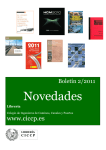


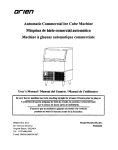
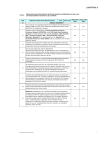

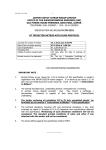
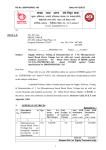
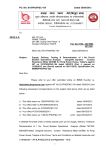
![[U4.42.06] Opérateur DEFI_GLRC](http://vs1.manualzilla.com/store/data/006380164_1-bd57f34bb6ed22e5fc2ac08a15cf7fe0-150x150.png)